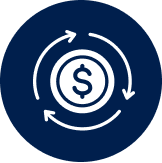Simply put, cashflow is the difference between the amount of money you make (income) and the amount of money you spend (expenditure). When your income exceeds your expenditure, you’re deemed to have a cashflow positive position. In other words, you have a surplus income or savings in the bank. In the event your expenditure exceeds your income, you have a cashflow deficit or debt.
Having a cashflow surplus or savings position will allow you to live your lifestyle for today as well as plan ahead for your future financial freedom. You can buy the new car, go on holiday, go out for dinner, pay for children’s education, save for a rainy day as well as invest for the future.
Having a cashflow negative position is likely to lead to living paycheck to paycheck which leads to potentially increasing your debt to cover daily expenses. This could lead to more debt and eventually could lead to losing your assets and in some severe cases, could lead to you becoming bankrupt. If the debt is not managed properly this could lead to more stress for you and your family.
There’re simple steps you can take to manage your cashflow.









